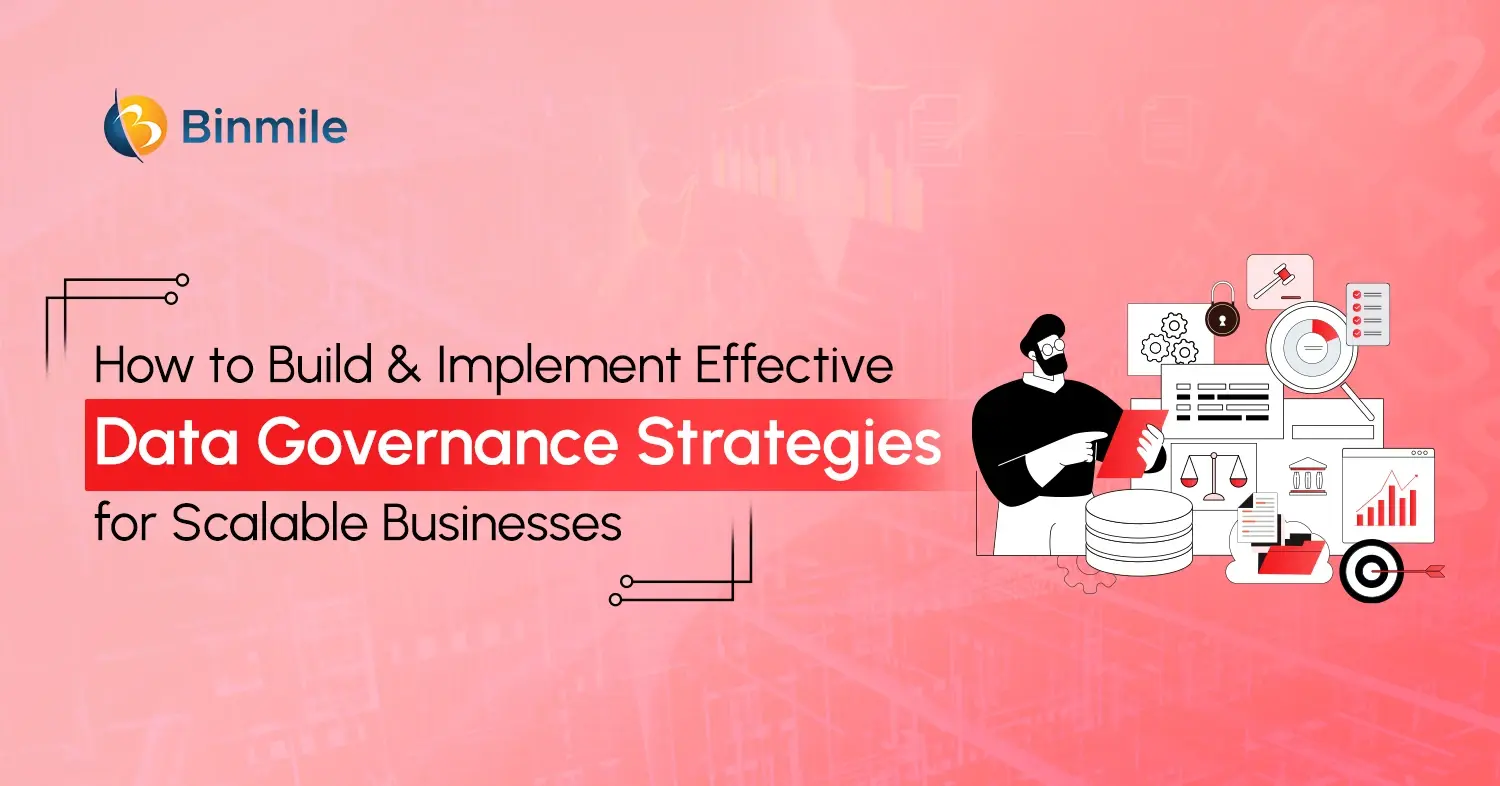- Data management best practices
- Factors influence MDM Implementation Cost
- how to implement an MDM solution
- Master Data Management
- master data management implementation
- MDM benefits
- MDM cost
- MDM implementation
- mdm implementation cost
- MDM Implementation Styles
- MDM strategy
- Role of MDM Implementation
- what is MDM implementation
Businesses rely on a web of interconnected applications, such as ERP, CRM, or HR systems, for efficient processes. However, the flow of data across departments also has the potential for fragmentation, duplication, and inconsistencies to creep in, making it more difficult to gain clear insights and drive informed strategic decisions. Not only that, poor-quality data flow within an organization has not only slowed down business growth but has also been a costly burden for them. Companies are losing an average of $12.9 million annually due to inaccurate, incomplete, or inconsistent data. Master Data Management (MDM) implementation offers a structured approach to maintaining consistency, relevance, and trust in enterprise data.
As a process, MDM implementation not only ensures that data is streamlined, accessible, and accurate but also provides support for seamless operations and informed decision-making. This guide outlines the essential steps for implementing Master Data Management, the key benefits it delivers, and the MDM cost considerations businesses should consider before getting started. By mastering data management, you can gain access to consistent quality data, setting a single source of truth for all your critical data, and potentially revolutionize your business operations.
What is Master Data Management Implementation?
MDM, or Master Data Management, is a comprehensive approach to ensure that your organization’s critical or master data across the enterprise is managed effectively. Since master data is quite crucial to your business operations. In addition, master data is typically shared across the enterprise, and multiple departments and personnel rely on it for informed decision-making; therefore, effective management is crucial. Therefore, the idea behind MDM implementation is to develop a unified master data service that consolidates key enterprise data assets, resulting in fewer errors and less redundancy.
Types of Data
There are six types of data commonly found in an organization:
- Unstructured data: Emails, white papers, product specifications, and PDF files. This data is often rich in context but more complex to analyze systematically.
- Transactional data: Business events and transactions, such as sales, invoices, and claims. Its main task is to capture the details of day-to-day operations and financial movements.
- Metadata: It helps in organizing, searching, and managing datasets effectively. For instance, data about other data, such as report definitions and log files.
- Hierarchical data: Establishes connections that define workflows and dependencies within a system, such as organizational structures or product lines.
- Reference data: It ensures consistency in reporting and regulatory compliance by categorizing other data, such as country codes and industry classifications.
- Master data: Acts as a single source of truth for accurate decision-making and integration across systems. It covers core data describing key business entities, such as customers, products, and locations.
Role of MDM Implementation in Enhancing Data Management & Business Intelligence
The benefits of effective MDM implementation include a significant improvement in data quality, ensuring that your data is accurate and reliable for performing mission-critical activities.

- Improve Efficiency: When you can eliminate data silos and have all your organization’s most critical data up to date in one shared location, you streamline operations and increase collaboration.
- Ensure Data Trust: Data that is centrally governed and maintained ensures your data is accurate and reliable for performing mission-critical activities.
- Save Resources: With automated and streamlined data processes, reduce manual efforts and free up resources for higher-value tasks.
- Enhance Compliance: A well-executed MDM implementation ensures that organizations meet regulatory requirements by ensuring data accuracy, security, and proper governance.
- Drive Insights: With all your critical data in one place, it enables deeper analytics, leading to a personalized customer experience and strategic growth.
Know the Difference: Data Management vs Data Governance
4 Key MDM Implementation Styles
Choosing the right MDM style ensures scalability and growth. This article explores four popular styles to help entrepreneurs select the best approach for their organisation’s success.
- Registry Style: This MDM implementation style identifies duplicate records using cleansing and matching algorithms. It assigns unique global identifiers but does not update source systems, relying on them for data maintenance.
- Consolidation Style: MDM creates a central “golden record” by merging data from multiple sources, which humans then verify for accuracy and completeness. It syncs updates with original systems, enhancing reliability and decision-making.
- Coexistence Style: This style establishes a central hub that synchronises master data with source systems bi-directionally. It allows gradual implementation and maintains accuracy while integrating with existing workflows.
- Centralised Style: It maintains master data in a central hub, enriching records before publishing updates to source systems. This MDM implementation style streamlines operations and improves decision-making through unified data management.
Discover How Top Companies Align Data, Slash Chaos, and Skyrocket ROI with These Expert Secrets—Don’t Miss Out!

7 Factors that Influence Your MDM Implementation Cost
Implementing an MDM involves multiple cost factors, influenced by organizational size, complexity, and specific requirements. Below are seven key factors that impact MDM implementation costs, each with an estimated range of MDM costs.
1. Software Licensing and Subscription Fees
The number of users, data domains (e.g., customer, product), and vendor pricing models have an impact on your MDM implementation cost.
- Cloud-based subscriptions: $50,000 to $200,000/year for smaller to mid-sized deployments.
- On-premises licenses: $100,000 to $500,000 upfront, plus annual maintenance (~20% of license cost).
2. Hardware and Infrastructure Costs
For on-premises MDM, hardware costs include servers, storage, and networking equipment. Cloud-based MDM may involve cloud hosting fees (e.g., AWS, Azure).
- On-premises: $50,000 to $200,000 for initial hardware setup.
- Cloud: $20,000 to $100,000/year for hosting, depending on data volume and processing needs.
3. Implementation and Integration Services
Professional services for installation, configuration, and integration with existing systems (e.g., ERP, CRM). The MDM cost for implementation can include data mapping, ETL (Extract, Transform, Load) processes, and custom development.
- Small to mid-sized projects: $100,000 to $300,000.
- Large, complex integrations: $300,000 to $1,000,000.
4. Data Migration and Cleansing
Migrating legacy data into the MDM system would be a relatively costly process, involving data cleansing, deduplication, and standardization to ensure data quality and integrity.
- Simple migrations: $50,000 to $100,000.
- Complex, large-scale data cleansing: $100,000 to $250,000.
5. Training and Change Management
Expenses for training staff on the MDM system and managing organizational change to ensure adoption. Includes training materials, workshops, and change management consultants.
- Basic training: $20,000 to $50,000.
- Extensive programs with change management: $50,000 to $100,000.
6. Ongoing Maintenance and Support
You need to ensure that the data management cycle is functioning optimally. These areas cover post-implementation support, including vendor support contracts, internal IT staff, and system updates.
- Basic support: $30,000 to $70,000/year.
- Comprehensive support for large systems: $70,000 to $150,000/year.
7. Customization and Scalability
Both have associated costs, which can range from tailoring the MDM system to specific business needs (e.g., custom workflows, interfaces) to scaling it for future growth.
- Minor customizations: $50,000 to $100,000.
- Extensive customizations or scalability enhancements: $100,000 to $300,000.
Also Read: Must-Have Data Management Tools
5 Key Steps for Effective MDM Implementation: Ensuring Data Quality & Governance
Here are five essential steps to ensure your MDM implementation is structured, scalable, and aligned with organizational objectives.

1. Align MDM with Business Priorities
Rather than seeing MDM as mainly the work of IT, businesses should focus on delivering valuable business outcomes. Clarity regarding the goals, such as improving customer 360 views, simplifying supply chain data, or meeting standards, will determine if the initiative succeeds. Additionally, you should engage business leaders early in the process to define key performance indicators (KPIs), clarify use cases, and establish shared accountability.
2. Conduct a Comprehensive Data Assessment
It is crucial to understand your current data environment. This includes primary master data, assessing data quality, and identifying all sources of data, as well as highlighting duplicates, inconsistencies, or outdated, siloed systems. A careful review of the data provides a foundation to guide decisions on what to focus on, how much to allocate, and what challenges to anticipate during the integration process.
3. Establish a Strong Data Governance Model
MDM relies on having solid governance in place, defining data ownership, outlining tasks, and establishing approval processes for the data. Set up policies about how data is made, adjusted, and accessed in each part of the organization. Ensuring consistency, accountability, and traceability is handled by governance, which MDM implementation needs to maintain rather than scatter.
4. Choose the Right MDM Platform
The right technology can assist your business model, but should not decide it for you. Selecting the right MDM platform means evaluating more than just features. You need to consider several factors, including whether it aligns with your architecture, its scalability, the data domains it involves, and its integration capabilities. Select adaptable solutions, handle various domains, and provide good support and detailed documentation from the vendor. Avoid getting caught up in the buzzwords; choose a platform that helps you in the long run.
5. Implement in Phases with Clear Metrics
Adopt a phased rollout strategy, starting with a high-impact domain to demonstrate early wins and validate your governance model. Pilot deployments serve as a testing ground for improvements and the early detection of problems, enabling a gradual expansion to the entire company. Determine and track metrics that reflect business success, such as improvements in data quality, reduced manual work, or accelerated reporting timelines. These metrics not only demonstrate ROI but also foster continued executive support.
Stop MDM Delays and Cost Overruns. Get Expert Guidance for a Smooth, Effective Implementation

Key Takeaways from MDM Implementation Guide
The importance of Master Data Management (MDM) cannot be overstated. It enables organizations to maintain a single, accurate, and consistent source of truth across systems, departments, and business functions. However, a successful MDM implementation can be complex, given the technical, operational, and financial considerations that must be addressed. With a clear roadmap and a strategic approach, businesses can significantly streamline the process and enhance decision-making across the board.
In this blog, we explored how to implement an MDM solution, the various MDM cost factors involved, and the long-term benefits that a well-executed MDM strategy brings to the organization. We hope this guide has equipped you with actionable insights into designing an MDM framework that aligns with your business needs and helps you fully realize the potential of master data for sustained operational and strategic advantage.
Want cleaner, smarter data? Get a free consultation with our data engineering experts on building the right MDM strategy for your business.









